



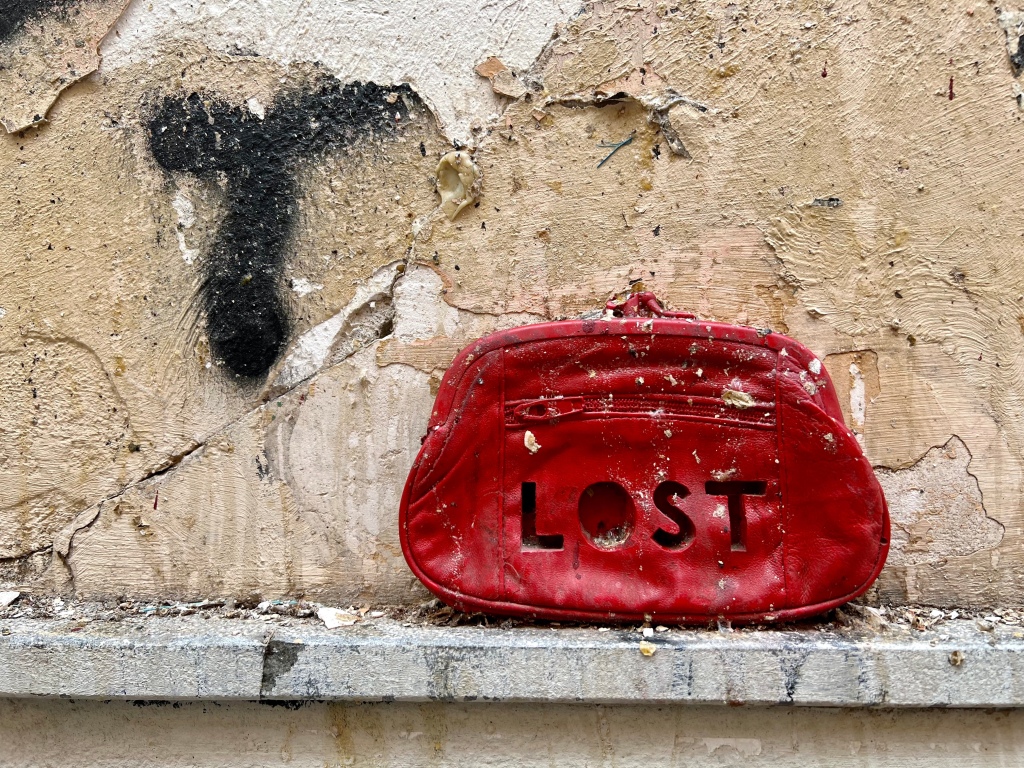
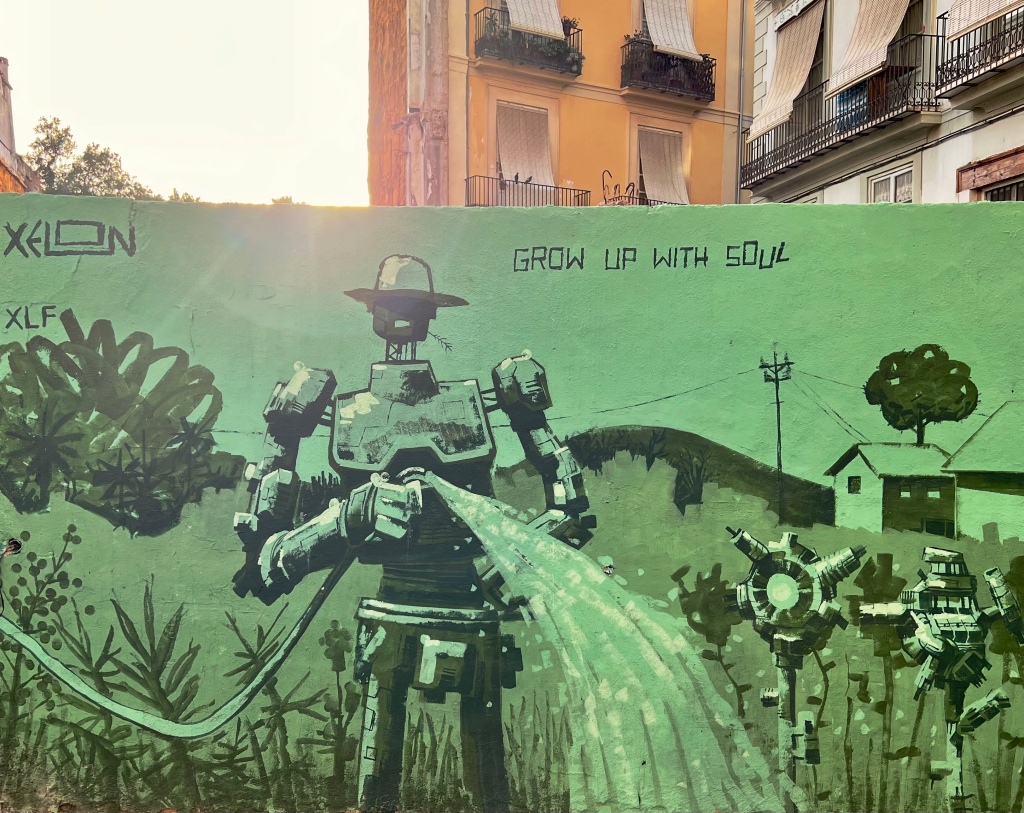

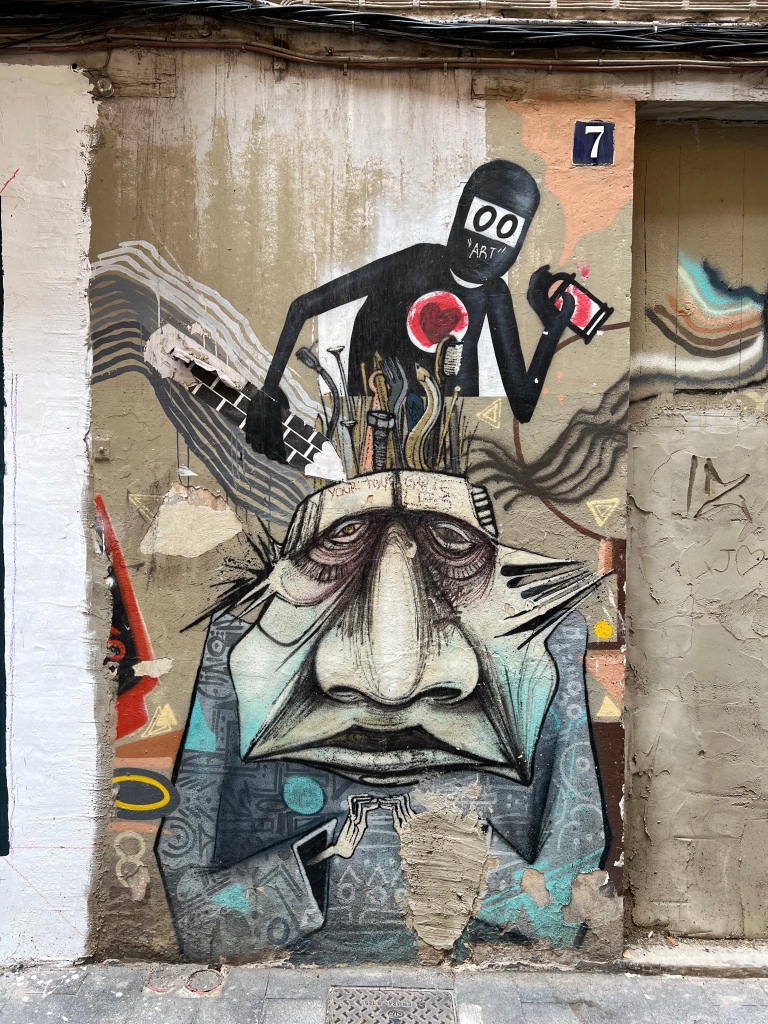

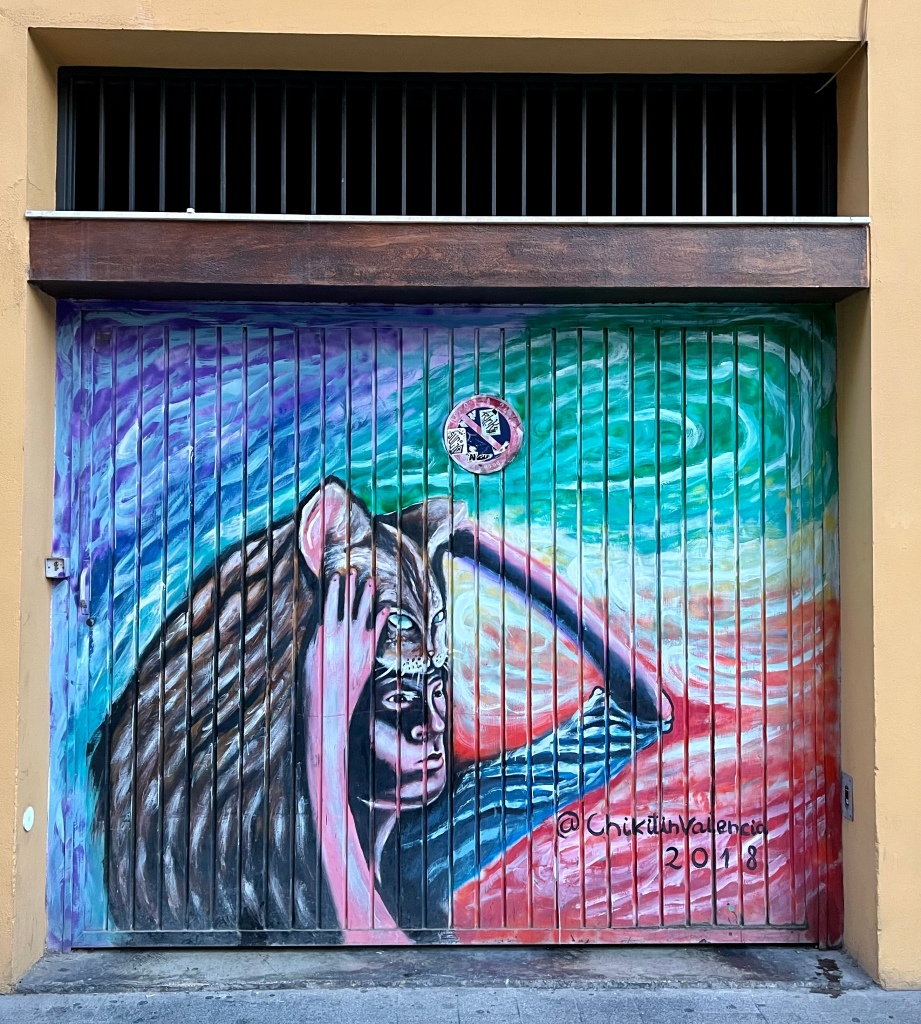

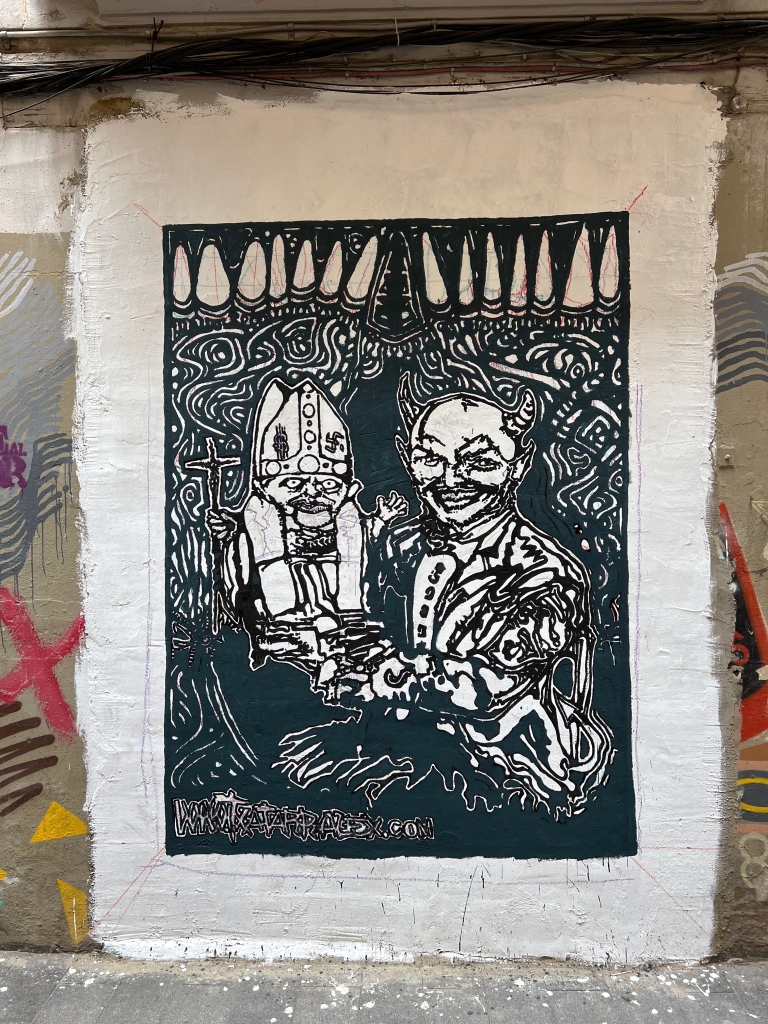
















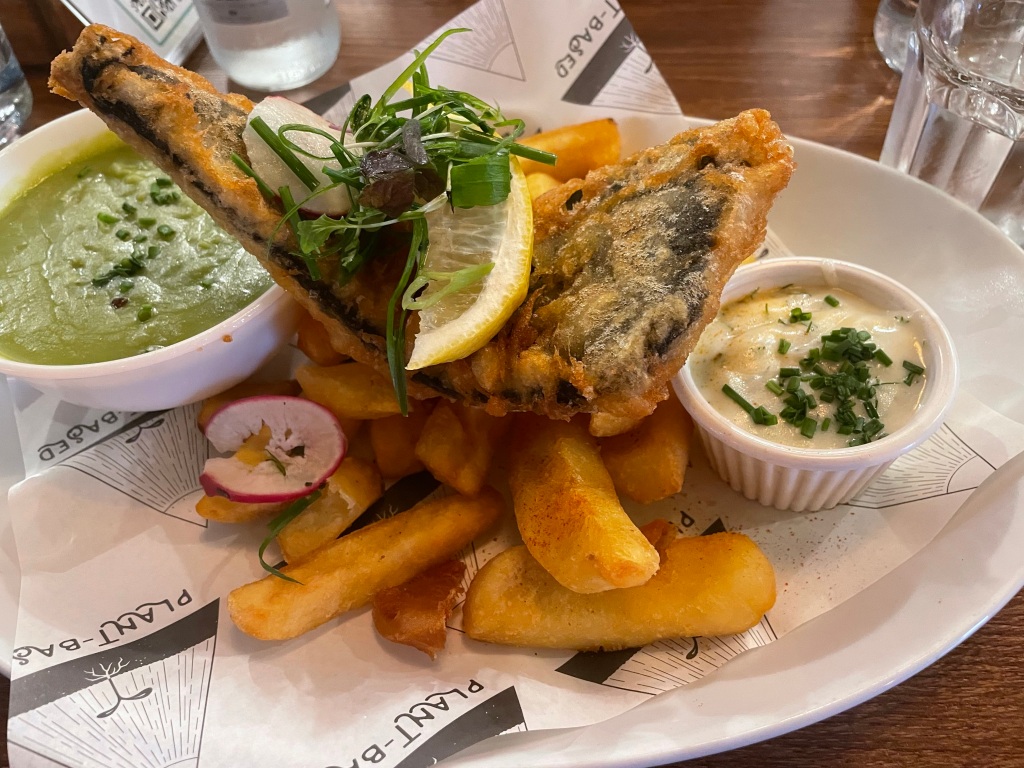
There’s a soul warmth to Unity Diner that hits you as soon as you walk in. Founded in Whitechapel, London, in September 2018 by a group of vegan activists who came together to form the campaign group Surge, the restaurant prides itself on its vibe, as well as its food. The welcome we received from the friendly staff on a recent visit one scorching Saturday afternoon, and the excellent fare, confirmed its excellent reputation.
It’s a bright modern diner and cocktail bar, and the menu has a fast-food feel to it, with small dishes including mozzarella sticks and sweet chilli calamari rings, larger portions such as lobster mac ’n’ cheese, and chicken kale Caesar salad, plus a hefty burger and dirty fries section. Some meals, such as the tofish and chips, are clearly signalled as plant based, but with much of the menu no effort has been made to change the more usual omnivore names. But yes, it’s fully vegan.
I had the tofish and chips, which was a real treat; light, crispy, melt-in-the-mouth batter coated a good-sized chunk of tofu, served with superbly plump chips. While it might present as fast food, it tasted as close to wholesome as this kind of meal can be. My companion spoke highly of her option – the healthier-sounding sweet chilli and lime prawn salad. I rounded it off with an oat latte and a slice of Black Forest cake, which was good, although more like a cheesecake in consistency than the name suggests. Eschewing dessert, my friend declared her pornstar martini a massive success.
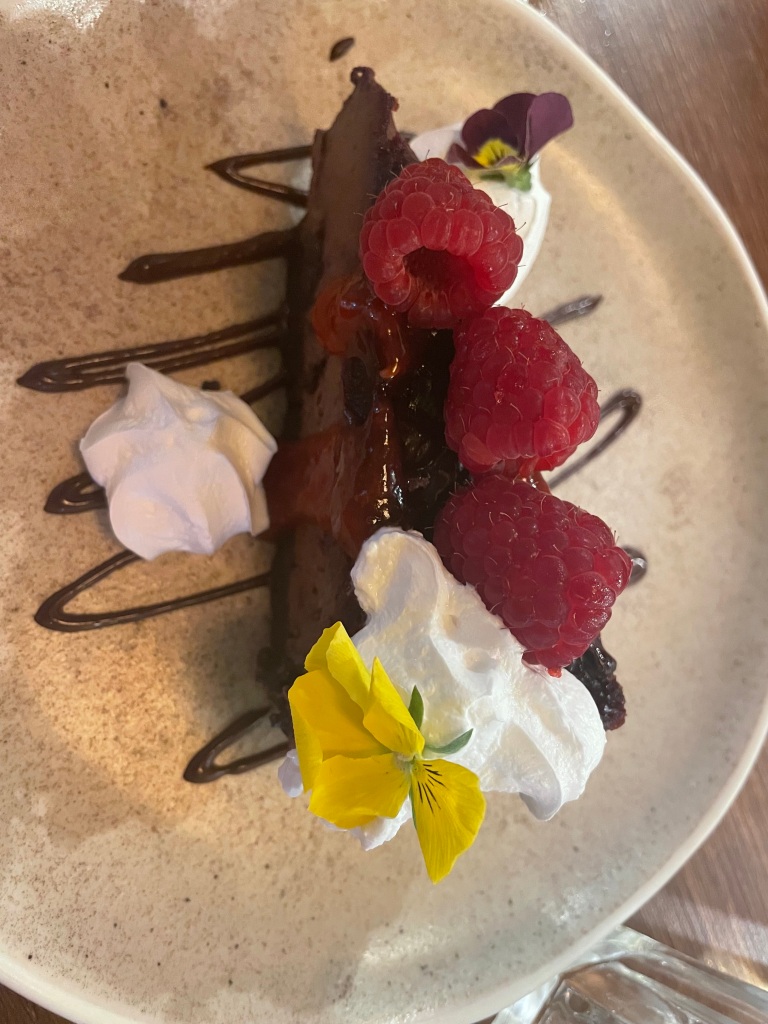
Although I didn’t try it myself, an incredibly popular option at the diner was 3D printed Redefine Meat, of which there were several choices. These included a 3D printed filet mignon wrapped in streaky bacon and served with creamy confit jersey potatoes and a side of garlic greens. These are high-protein products made from various sources, including soya, wheat and pea.
The reviews I’ve read suggest this is the current crème de la crème of fake meat products, with a smell and a texture that’s almost too authentic for those who, like me, have that meaty flavour and mouthfeel so deeply associated with animal cruelty that it’s hard to unlink the two. At £26 for the steak, it is not cheap, although if you fancy just trying the concept out, Unity Diner offers a burger version at a more affordable £15. Something for another visit perhaps.
I’m not sure why it took me so long to get here. The reviews are great and the restaurant itself is run on a not-for-profit basis, with all money raised going to an associated animal sanctuary that opened at the end of 2022. Added to this, since I first heard Ed Winters, known as Earthling Ed and one of the founder members of Surge, speak at the charity’s animal rights rally in 2017 here in London, I’ve been a fan.
The videos that he’s posted online over the years, in which he calmly addresses the misconceptions and cognitive dissonance of everyday omnivores, are a study in how to guide people to their own conclusions about institutionalised animal abuse, rather than shove what can be perceived as the extremist ideas of veganism down their throats. Through his matter-of-fact comments, strangers are tripped over their own often poorly thought-through arguments about the importance of meat and the use of animals as commodities, and can become visibly baffled as to why they haven’t thought of these things before.
All straws, takeaway containers and coffee cups at Unity Diner are 100 per cent biodegradable and plastic free. Staff uniforms and merchandise are ethically made (no sweatshops!) with organic cotton and chemical-free vegan ink. And any suitable food waste from the restaurant is donated to be fed to animals who have been rescued from slaughter.
The food is great, served by staff who embody the philosophy of adding positivity to the world, and your money goes to creating a compassionate future for animals otherwise destined for the dinner plate. I’ll be paying another visit soon.

There’s a reason why so few restaurants use white tablecloths nowadays. Mess. They require way too much manpower and effort to maintain that pristine standard between courses, let alone between diners.
And so between the second and third “meals” of my nine-course tasting menu at Gauthier Vegan Restaurant in Soho, London, I was – I believed surreptitiously – nudging some of the copious flaky specks of wild rocket pain feuillete from the white cloth to the deep carpeted floor, when I discovered a new level of fancy.
Out of nowhere, silently, efficiently and without judgment of my unsophisticated gobbling – or so I was assured – our young sommelier appeared with a long thin metal crumber. I’d never encountered such a tool before, but with a few subtle flicks over the table, it removed the detritus from the white cloth, and we were now ready for a terrine of smoked carrot, orange tarragon and pine oil. An equally flaky morsel, but this time I was confident enough not to bother with the discrete attempts to cover my tracks and relaxed into the feast.

We had booked for the nine-course Grand Dîner, though however many times I counted on the menu, it added up to ten elaborately presented mini-meals.
The accomplished French chef Alexis Gauthier, who has been an occasional judge on BBC’s Masterchef since 2009, originally opened this restaurant in 2010. It served traditional French cuisine at that point, and within a year had achieved a Michelin star. Gauthier’s interest in vegetables and plant-based fine dining goes back more than 20 years, but even after going vegan himself in 2016, his Soho establishment continued to serve some meat dishes until 2021.
The restaurant consists of five rooms of varying sizes in what was originally a Georgian townhouse. Entry is by ringing the bell on an elegantly understated door. This feels special, like you are visiting an incredibly posh friend, or maybe that you are an invited guest at some exclusive dinner club.

Once inside, our dining room contained four other pairs of customers all ready for the £95-a-head banquet, with some opting to pay an extra £70 for wine pairing. After a very brief discussion – would we be leaving the restaurant standing after that amount of alcohol, and were our palates really refined enough to justify the cash? – we decided no to course-by-course wine. Instead we spread a glass of house red and a few jugs of tap water across the two-and-a-half hours it took to complete our repast.
The food was plentiful, flavoursome and tasty. We both enjoyed the elaborate and intricately pretty vegetable-based morsels, though my companion balked at the potato salad, saying she couldn’t place her finger on what was making it so sour.
And aside from the novelty factor, the “3D printed meat” wasn’t for me. It’s made using an alternative protein to print the ingredients layer-by-layer based on the structure of animal meat. It’s been more than 40 years since I gave up eating flesh and maybe this was just too unfamiliar and stringy a texture for me and too umami a flavour, but it was good to get a taste of one possible future for the artificial meat industry.

I thoroughly enjoyed the whole experience. It felt very much like an event rather than your bog-standard night out, and, along with some amazing innovative flavour blends, that was enough for me.
I also loved the young staff who served us; po-faced and with an over-the-top seriousness, they described the opulent food they were placing before us in fantastically flowery and pompous language. It felt distinctly like we were all playing set roles in the fine-dining game, with an understood tongue-in-cheek humour behind it all (pssst, it’s only food)… though this could merely have been our own rather insecure sense that here was a place where we didn’t really quite belong.
For a cheaper, but still fancy Gauthier experience in London, try the vegan sushi or burgers in his family-friendly restaurant 123V in New Bond Street, Mayfair. Alternatively, you can sample the vegan French pastries or enjoy a bottomless salad bowl at the 123V Bakery within BFI Fitzrovia.
If you’re interested in knowing a bit more about what Alexis Gauthier does, the video below is a good introduction.

Strange bleats and whinnyings like I’ve never heard draw me towards a lush spring paddock. Scores of goats mill around munching grass, or chilling. They are not the bleaters. The peculiar noises come from a pair of long-necked, quiff-topped quadrupeds straight out of Dr Seuss… chasing each other from one side of their dandelion-speckled patch to the other, occasionally stopping to whack each other with their necks and tumble about for a few seconds: fighting… playing… mating? Who knows?
Certainly not this city boy who has rarely crossed paths with llamas – particularly not in England – and who took a few seconds to drop the Dr Seuss image and recognise them for what they were. They were on the far side of the Hillside Shire Horse Sanctuary at West Runton near Cromer on the Norfolk coast, and for me the most unexpected residents here. I went expecting shire horses but, in addition to the magnificent beasts for which the place is named, also saw cattle, goats, sheep, donkeys, pigs, roosters, turkeys, those llamas and, perhaps even weirder (to my eye at least), alpacas.
All these creatures have some kind of story related to the abuses of the farming industry or simply of human carers who failed to care. Here, though, thanks to the dedicated efforts of the volunteers who run the Hillside Animal Sanctuary, they have peace and indeed sanctuary ([noun] refuge or safety from pursuit, persecution, or other danger).

The sanctuary is the public face of the organisation, and is billed widely as a tourist attraction in the area. There were plenty of visitors on the day I went, enjoying the opportunity for close encounters with the animals in settings immaculately maintained and tended by the volunteers. But while it is indeed a lovely place to spend an hour or two simply for the sake of it, it also promotes a strong vegan message highlighting the cruelty of much of the farming industry. This is done so subtly via little labels here and there that you could almost miss it. The small cafe also offers only vegan snacks.
The combined effect of the non-preachy educational material and the presence of so many well looked-after creatures, many saved from horrendous fates, underlines the fact that these are sentient beings and not food. I doubt everyone who walks out the gate at the end of their visit will become an instant vegan, but enough seeds will have been planted to inspire at least a little questioning and perhaps further investigation.
The Hillside Animal Sanctuary also has an investigation unit whose undercover filming helps to expose cruelty on farms. It has a real impact, for example inspiring the supermarket chain Waitrose to change a supplier. These videos are also excellent educational resources for anyone who might be interested in knowing how their meat and dairy produce are made. But it’s a long-term mission, because the agriculture industry is more interested in the money it makes than the wellbeing of the creatures it abuses to make it. As Wendy Valentine, who founded Hillside Animal Sanctuary after seeing how battery hens are farmed, says: “The farms are protected, not the animals.”
If you find yourself in the area, and you like animals, a visit to the sanctuary – whose patron is the actor Martin Shaw – is well worth making. The place is funded wholly by donations, and if you’re interested you can help in various ways, for example by adopting a rescued animal or contributing some money; there is information about this here.


OMNOM, a vegetarian restaurant and yoga studio that opened in January 2022, is set in a light, airy and modern space just off Upper Street in Islington, London.
A registered charity, which states that it is founded on the principles of compassion and kindness, this formerly vegan business promises that for every meal eaten there, OMNOM donates a hot and healthy meal to a child in the developing world. Among its ambassadors, it lists podcasters Jay Shetty and comedian Russell Brand.
As an eating experience, it offers a wide range of foods, from street-snacky bits to small plates and traditional curries. The food we tried was delicious. The samosas – three per portion – were tasty and served with a light spicy sauce. The masala puri was something I’ve not experienced before, and both different and lovely, consisting of crispy shells filled with potatoes, chickpeas and bell pepper, dressed in chutney and sprinkled with sev.
To follow we went for the jackfruit biryani medley, cheesy nan bread and makhani daal. The jackfruit was excellent; it was chunky and moist, adding superb texture to the spicy rice. The nan was perfect, with a great melty vegan cheese. And the daal, made from lentils and red kidney beans in a mildly spicy, buttery and creamy gravy, was just delightful. I had the rich plant-based chocolate cake and ice cream to follow, while my friend went for a dairy dessert.

The food itself was excellent, with decent portion sizes. Unusually and rather disappointingly nowadays, this restaurant began as a vegan place and more recently chose to add dairy to the menu, so ordering can be tricky as some meals are available as a vegan option only. Plus, personally, I am much more inclined to support fully vegan businesses.
Overall, great ethic, lovely food and attentive service, perhaps a little too much so at points – it was startling to have the bill plonked on our table halfway through dessert and with our not having requested it. We were assured there was no rush… but there clearly was.
Looking at my booking email later, I noticed that one hour and 15 minutes is allowed per meal for a table of four and under. My bad for not noticing when I reserved a table, as to be honest it may have put me off as the main event on a night out to celebrate a friend’s birthday. It’s not an cheap night out. Without alcohol, our dinner for two came to £80, so a more relaxed ending would have been the icing on the cake, rather than leaving a slightly sour taste.
That said, a leisurely stroll down a busy Upper Street on a Friday night is a great way to end an evening.
Boris Johnson. Nigel Farage. Jacob Rees-Mogg. Liz Truss. Matt Hancock. Piers Morgan. Jeremy Clarkson. Priti Patel… The list goes on, a grotesque cast of the privileged and entitled who ooze across the husked-out landscape of modern Britain in this powerful video by the artist Cold War Steve (Christopher Spencer) for the title track of the Sleaford Mods’ new album UK Grim.
Even though the song doesn’t name check them all, they are perfectly placed in this clever visual, verbal and musical frontline report from, well, UK Grim. Overall, it’s not so much a personal attack on individuals as an account of a broken society and the system that facilitates it.
It’s a visceral expression of rage and despair that helps to articulate what many might be feeling about living in a country where the rich are richer than they have ever been, while somewhere down the road people queue up to feed their families at food banks. Crucially, as always with the Sleaford Mods, there’s an undercurrent of dark humour that somehow provides a bit of yin for the yang of it all.
There’s an excellent recent interview with the band in The Guardian that is worth a read, and the conversation below, in which Cold War Steve and the Sleaford Mods’ Jason Williamson and Andrew Fearn discuss the video, is also really interesting.

If you like a bit of hard-hitting post-punk rock ’n roll, check out this new EP by The Bricks from York in the UK.
They’re tight, they throw time around, they rock out totally, they even funk it up some. It’s a really interesting sound: in the DNA, I hear Fugazi, Gang of Four, Led Zeppelin (check the crazy riff in the title track), Big Black, Huggy Bear, Queen (?!!), MC5… I could keep going. So much there and nothing derivative; they’ve a sound of their own and it’s really cool.
Have a listen here and if you like it, consider popping a few quid via their Bandcamp page to support a new non-corporate DIY band.
The Bricks are drummer Marc Walker (whose mighty work I know well from his previous group Red Monkey), bassist Paul Steere, singer Gemma Hartshorn and guitarist Guy Crouch.
If you want to know more about them, you can search them out on social media (sorry, I don’t feed those particular algorithms with links, but they’re easy to find if that’s your cup of tea).

Prague has a lot to offer vegans: on HappyCow I recently counted 58 dedicated restaurants in the Czech Republic capital, with numerous other places providing options for herbivores.
However, after travelling around Europe for two weeks, what we needed most was a deviation from the vegan burgers and other fast foods so often found in more recently established cafés. We were also looking for something a little kinder on the wallet.
Country Life was perfect. It’s a buy-by-weight restaurant located just south of Prague’s medieval Astronomical Clock in the old part of the city, so you get to take in some of the sights as well. It’s attached to an organic food store, part of a chain that began in 1991 and now includes an organic farm and bakery.

The restaurant is buffet style and cheap, offering a wide range of salads and hot dishes, full of the freshest ingredients, as well as drinks and desserts. You choose what you want, dish it on to your plate and pay according to what it weighs. A lovely, patient staff make the process seamless.
I am a sucker for weigh-and-pay buffets, because you get to try so many different things. With such an abundance of salads on offer, this place is a great antidote to the junk food you often find in vegan establishments when you are on the road. While that junk might be tasty and fill the gap, it doesn’t necessarily provide the nutritional benefits of the whole grains and fresh vegetables we thrive on.

Country Life was also excellent for traditional Czech foods and spicier curry and chilli-type dishes. I piled it all on. The boiled herby potatoes were simply cooked but absolutely amazing. (We ended up taking a carry-out box with the potatoes and a range of salads back to our hotel for later.)
We finished with sugar-free vegan cheesecake and grain coffee, and left the restaurant energised by the much-needed injection of whole food into our travel diet. If you’re in Prague, it’s well worth visiting.


Traditional Tyrolean cuisine is dense, rich and has a hell of a lot of meat and dairy in it. So when meandering through Innsbruck, the capital of the Austrian state of Tyrol, you’ll see restaurant menus celebrating dishes such as Kasspatzln (egg noodles baked in cheese), Gröstl (a fried hash of bacon, potatoes and onion with an egg on top), Knödel (sweet or savoury dumplings), and butter-heavy cakes and pastries with equally umlauted names.
Top of the list of local delicacies is Speck, a distinctively juniper-flavoured fatty ham, the vast overconsumption of which once left my younger brother projectile vomiting for two days. This was many moons ago, and he’s since become a committed vegetarian, but just the word Speck is enough to conjure up shudders in my family.
Times have changed, and generally Austria, which like Germany has held a long-standing passion for all things ‘green’, has become a little more welcoming to those who don’t eat meat. But still, dishearteningly, everywhere you go you see menus offering endless meals made from animals’ body parts and their secretions.

We definitely weren’t in Innsbruck for the food. But, having taken a break from our usual self-catering places during a train trip around Europe, we were staying in a hotel to visit this stunning Alpine city and knew we’d have to make more of an effort to eat well.
The Green Flamingo was an absolute treasure. I’d like to say we serendipitously stumbled across this vegan restaurant, started in 2019 by Danish Kaspar and his Dutch partner Kim, but it’s in a tucked-away location and we were led there by the Happy Cow app.
Just beyond the main streets of Innsbruck, it greets you with a wonderfully green exterior covered in vines, and offers the choice of sitting inside or out on a rooftop terrace. It was a balmy evening, so we sat outside.
Though a little off the beaten track, the place was packed, so I was glad we’d booked. But the spaced-out tables and abundant plant life growing in containers (gleaming tomatoes and peppers, for example) on the roof around us – not to mention the sunset-kissed mountain peaks in the near distance – made for a laid-back atmosphere, with no sense of crowding at all.

The staff were great too. Whereas much of the Innsbruck hospitality industry seems to run on passing trade, with frequently desultory service, the waiters here were friendly and helpful.
So to the food. I can never resist summer rolls with peanut dip on a menu, so that was me sorted for a starter, and my partner ate the ‘We love cows’ quesadilla. Mine was really good, and his folded tortilla with melty vegan cheese, refried beans and Mexican spices looked and tasted amazing.

As a main, I can recommend the Lego Döner Plate – a DIY meal that presents you with an assortment of fresh vegetables and vegan döner ‘meat’, as well as a wrap and fries, which you put together as you please (I opted for eating separate items rather than stuffing all into the wrap). My partner ate the ‘Kevin likes Bacon’ burger. He’s a man who really knows his plant-based burgers and he declared this one superb.
It was really good food for sure, but for me the best thing about the Green Flamingo was its mere existence as an oasis of calm and veganism in the midst of all that animal consumption in Innsbruck. I felt at home.


With its abundance of fresh vegetables, noodles, rice and tofu, Chinese cuisine is a reliable option for any vegan who fancies a night off cooking.
For me, though, there is always an underlying discomfort when browsing a standard Chinese restaurant menu, loaded, as they usually are, with chicken, prawns, pork and – a particular gross-out for me – shredded duck. I seek to stay focused on my own food, trying not to think about the inevitable contamination possibilities in a busy kitchen.
It was wonderful, then, to discover Tofu Vegan, which has two branches not far from me in London. I enjoy it so much that I have dined at the Islington branch three times in recent months, trying a wide range of the 40 or so dishes on the menu. I suspect there will be more repeat visits.

As the name suggests, it’s vegan, which means it instantly feels like a place in which I want to eat. The food is amazing. The menu is set out in a traditional style, with colour photos of many of the meals, and the staff are both knowledgeable and helpful when it comes to choosing dishes that suit your palate and will go well together.
I’ve asked for and taken advice before each order and never been disappointed. My favourites include the wontons in special house sauce, Dongbei-style potato, green pepper and aubergine, and the Gong Bau tofu with peanuts, but I’ve not sampled a taste there that I haven’t absolutely enjoyed.
Many of the dishes are made with tofu and mushrooms, or with Asian imitation meats made from bean proteins and other meat-free ingredients. The cooks include chefs from Sichuan, the Cantonese south of China and the north-eastern Dongbei region, so the menu features a range of enticing regional flavours.

It’s not, perhaps, the cheapest dinner option, but the portions are large and the rice is served in a regularly refilled all-you-can-eat bowl.
The owners say Tofu Vegan offers a completely plant-based menu suitable for vegetarians and vegans, but will also delight those who usually eat meat. I can confirm this from my own experience, as on all occasions bar one my companions were omnivores. Without exception they thoroughly enjoyed the food with the delighted astonishment of those who regularly eat meat without any apparent thought as to whether there might be an alternative.